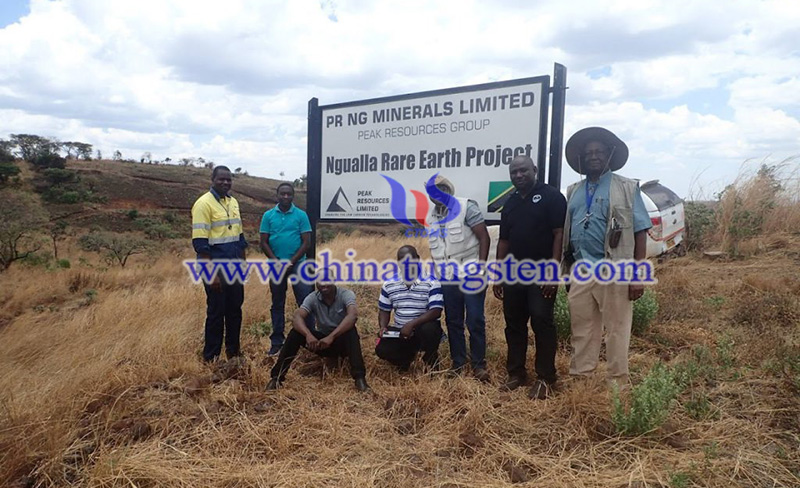Tanzania's Rare Earth Arouses Concerns from Mining Enterprises
- Details
- Category: Tungsten's News
- Published on Monday, 26 April 2021 14:54
- Written by Caodan
- Hits: 819
As the global demand for a green economy and crucial minerals increases, Tanzania is facing new mining and investment opportunities, such as Ngualla Rare Earth Project of Peak Resources, a rare-earth mining company listed on the ASX.
"The Ngualla project is one of the world's largest and highest grade undeveloped neodymium praseodymium (NdPr) deposits," said Bardin Davis, manager of Peak Resources. The goal of the project is to become one of the world's lowest cost integrated REE production bases.
"Our goal is to develop the Ngualla Project to benefit generations of the community and the people of Tanzania, and at the same time bring rich returns to shareholders," Davis said. The construction of the project includes mines and concentrators. It is estimated that the annual output of 40% rare-earth concentrates is 32,000 tons.

The already reserves in the project account for less than 10% of the total resources. The grade of rare earth oxides in the original ore is 4.8%. The mine life is expected to be 26 years, and it has the potential for further expansion.
"Another point is that the surrounding rock of the Ngualla ore body is weathered carbonate rock, and the bastnaesite is of high grade. This is very important because of its low acid consumption and low content of radioactive elements," Davis explained.
The current focus of the Ngualla mine is how to obtain a special mining license. Due to changes in regulations, the 2020 Tanzanian general election, and disputes between the government and enterprises, the special mining license for the project has been delayed.
Despite being affected by some unfavorable factors, Davis has confidence in Tanzania's mining industry. He believes that in the past, the country's mining was over concentrated on gold, diamond, and tantalum, but from the current point of view, the development of REE and battery minerals has great potential.
Neodymium praseodymium oxide accounts for 85% of the global rare-earth industry output value. The demand in 2021 is expected to be 70,000 tons, with a market value of approximately US$6 billion, and is expected to increase to US$12 billion in 2030, Davis said. Neodymium praseodymium oxide is used to produce permanent magnets, which are then used in the production of electric vehicle motors and direct-drive wind turbines.
The demand for the green transformation of the global economy, the commitment of many countries to net zero carbon emissions, and the arrival of the ban on fuel vehicles have all promoted the popularization of electric vehicles. In 2020, the sales of electric vehicles increased by 43%, which provided the impetus for the development of the rare earth industry.
All parties attach great importance to the rare earth industry. US President Biden ordered an assessment of the supply chain of critical raw materials including REEs. European. And recently, the Australian government announced a resource technology and key resource roadmap. Another reason for concerns about supply chains is the risk of supply disruption caused by the Covid-19 pandemic.
- Rare Earth Manufacturer & Supplier, Chinatungsten Online: www.chinatungsten.com
- Tungsten News & Prices of China Tungsten Industry Association: www.ctia.com.cn
- Molybdenum News & Price: news.molybdenum.com.cn
- Tel.: 86 592 5129696; Fax: 86 592 5129797; Email: sales@chinatungsten.com





 sales@chinatungsten.com
sales@chinatungsten.com